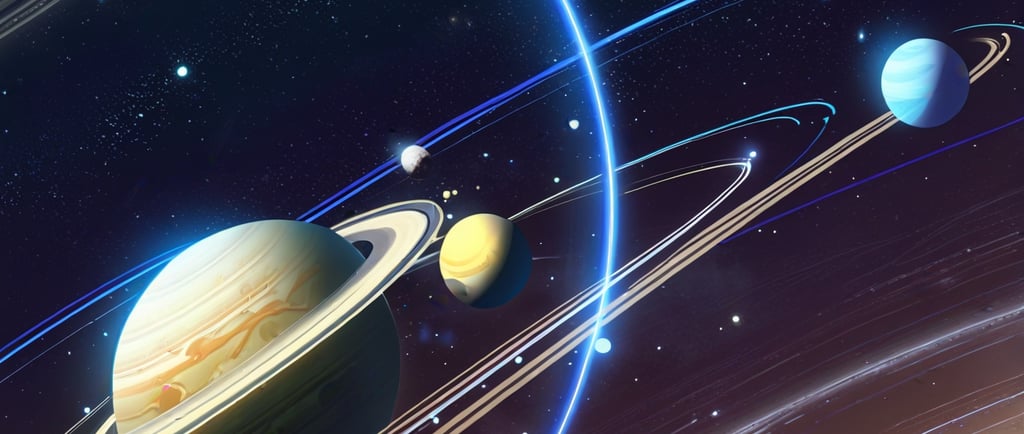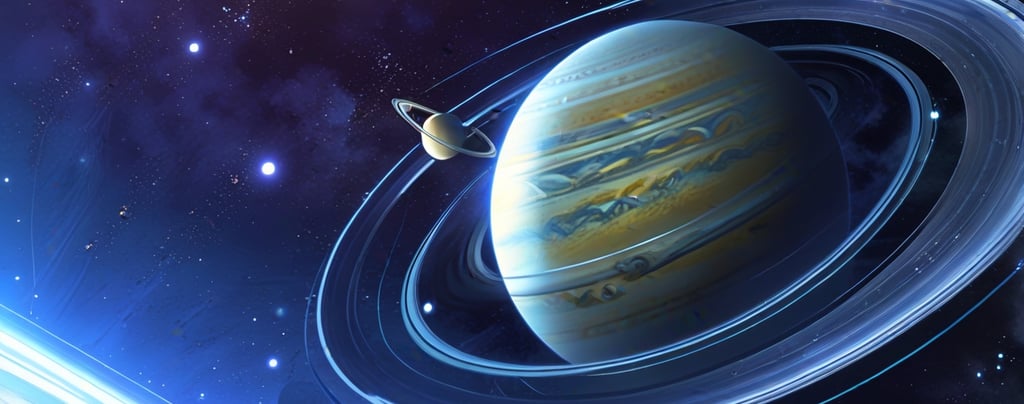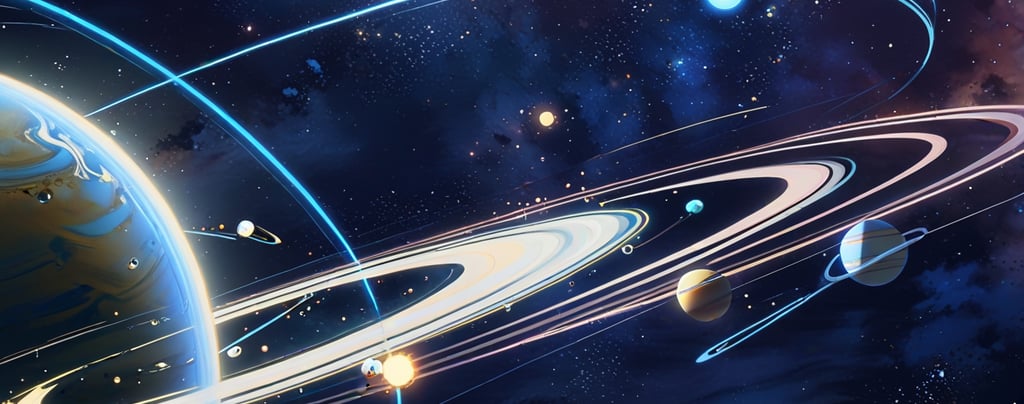Saturns New Moon: Secrets of Planet Formation
Discover how Saturns new moon unveil secrets about planet formation, solar system history, and the possibility of life on other planets. Explore the groundbreaking findings that could reshape our understanding of planetary science.
Black Heart
5/17/20253 min read


Can Saturn’s New Moons Reshape Planetary Science?
Introduction
I’ve always been fascinated by Saturn, the giant with its beautiful rings and mysterious moons. But recently, I started asking myself: what if the discovery of Saturn’s new moons changes everything we thought we knew about planetary science? With each new find, Saturn keeps proving it’s more than just a gas giant; it’s a cosmic laboratory waiting to be decoded.
How Many Moons Does Saturn Have Now?
Saturn already held the crown for the most moons in the solar system. Back in 2019, astronomers announced 20 new moons, bringing its total to 82, even more than Jupiter. And as technology improves, chances are we’ll keep finding more.
Each of these moons is tiny by planetary standards; many are no bigger than a city. But their orbits and compositions could help us unlock secrets about how planets form, how solar systems evolve, and maybe even how life begins.
Why Do These Moons Matter?
When astronomers discover moons, they’re not just adding trophies to Saturn’s collection. Each moon tells a story:
Captured Objects – Some moons may be ancient asteroids or comets snared by Saturn’s gravity.
Building Blocks of Planets – Others may be leftover pieces from the planet’s formation.
Geological Wonders – Larger moons like Enceladus have icy oceans beneath their crusts, shooting water plumes into space.
Every new moon we find expands the puzzle of how Saturn became Saturn, and, in a bigger sense, how planets become planets.


Could These Moons Redefine Planetary Science?
I think they just might. Here’s why:
Planet Formation Clues
The orbits of Saturn’s tiny moons reveal how they were pulled, pushed, and scattered by gravity over billions of years. Studying them could help explain how Earth and its neighbors formed.The Search for Life
Some of Saturn’s bigger moons, like Titan and Enceladus, already hint at habitability. Smaller new moons might hold signs of water ice, organics, or processes that support the building blocks of life.Solar System History
By mapping moon families and their orbits, scientists can piece together collisions, captures, and ancient planetary migrations that shaped our solar system.Planetary Definitions
At some point, adding dozens of moons forces us to rethink definitions: What really makes a planet? A moon? Could tiny captured objects blur the lines?
Are Saturn’s Moons Unique?
Not entirely. Jupiter, Uranus, and Neptune also have small irregular moons. But Saturn seems to be the champion moon-catcher. Its massive gravity and chaotic early history turned it into a playground of celestial bodies.
That uniqueness makes Saturn a perfect case study for testing theories about planetary dynamics.
What Could Future Missions Reveal?
NASA and ESA have already eyed Saturn’s system for exploration. The upcoming Dragonfly mission (heading to Titan in 2028) could shed light on how moons like Titan may host prebiotic chemistry. And who knows, if new moons prove interesting enough, they could become future mission targets.
Imagine a probe landing on a tiny Saturnian moon to analyze its surface or search for frozen water. That would truly reshape planetary science.


Key Points
Saturn now has over 80 moons, the most of any planet.
New moons offer clues about planet formation, solar system history, and even life.
Some may be captured asteroids, others building blocks from Saturn’s birth.
Future missions could explore these moons and transform planetary science.
My Thoughts
I think Saturn’s new moons are a reminder that the solar system is far from fully mapped out. Every discovery forces us to rewrite textbooks and admit that we’re only scratching the surface of what’s out there. If you ask me, Saturn isn’t just the “jewel of the solar system”, it’s a living archive of cosmic history, one moon at a time.
🔗 Related Articles from EdgyThoughts.com
🌐 External Resource
Learn more here: Wikipedia – Moons of Saturn